-
Car Reviews
- All reviews
- Midsize SUVs
- Small cars
- Utes
- Small SUVs
- Large SUVs
- Large cars
- Sports SUVs
- Sports cars
- Vans
Latest reviews
- Car News
-
Car Comparisons
Latest comparisons
- Chasing Deals
Reliable, but outdated and outclassed by virtually every rival on the road and in the cabin, the 14-year-old Mitsubishi ASX feels ready for retirement
The Mitsubishi ASX story goes like this: in 2010, the Japanese marque released a small SUV that was ahead of its time. Despite being decidedly average to drive, it was reasonably attractively styled, affordable, half-decently equipped for the money and easy to service. And then Mitsubishi did…nothing further. That car remains on sale 14 years later.
That’s a bit of a simplification – but it’s very nearly true. The ASX has had four facelifts since 2010 (minor ones, however), and Mitsubishi has fiddled with the engines (deleting diesel and AWD along the way), but the chassis and interior have mostly been left alone while competitors have been constantly updated and improved in the same period.
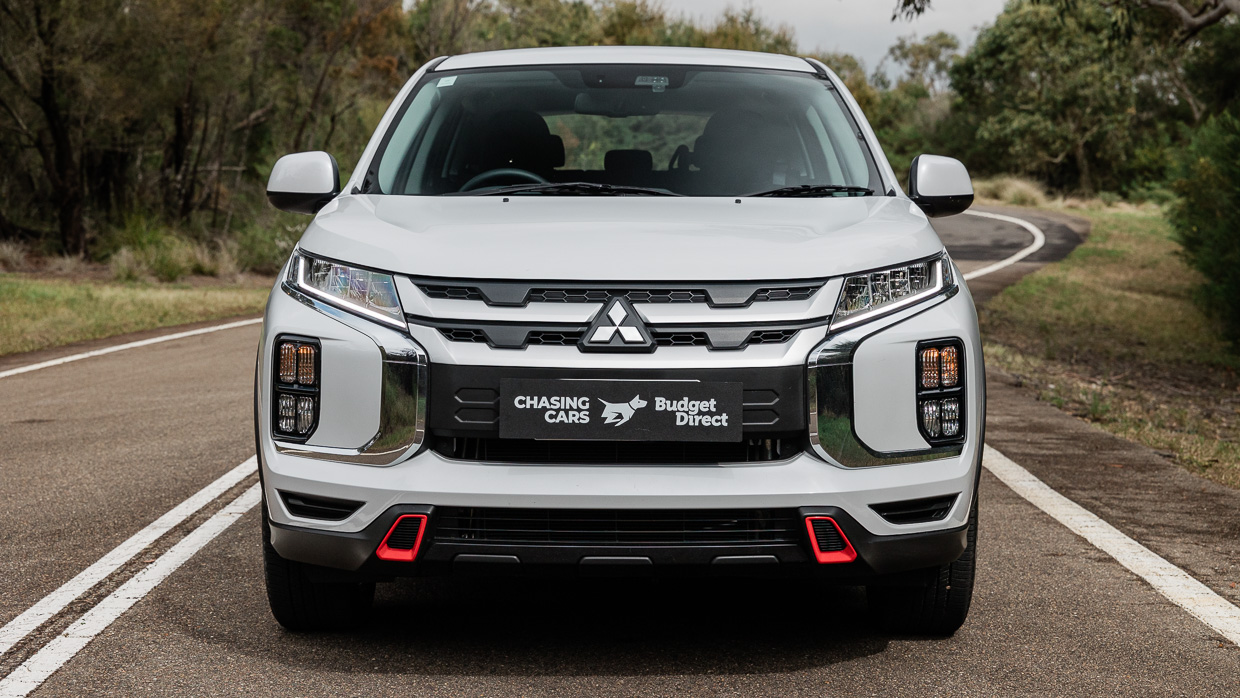
That leaves the ASX feeling like a time capsule to drive – and while it’s not that expensive, its advanced age means we can’t exactly call it a bargain. In fact, it should be cheaper. There’s no conceivable reason that Mitsubishi would not have recouped its investment on this vehicle years ago.
And yet, last year, the 9176 Australians who purchased a new ASX saw that it matched their needs. Those buyers weren’t tempted away from the triple-diamond by the ASX’s 20-odd rivals, all of which are newer and more modern, most of which are considerably better to drive and more fuel-economical, and many of which are safer.
Perhaps tellingly, Mitsubishi did not seek to submit an ASX to the Chasing Cars small SUV megatest in 2023 and if it had, it would have been considerably outclassed. Oddly, the Eclipse Cross that Mitsubishi did enter for that test never turned up, either.
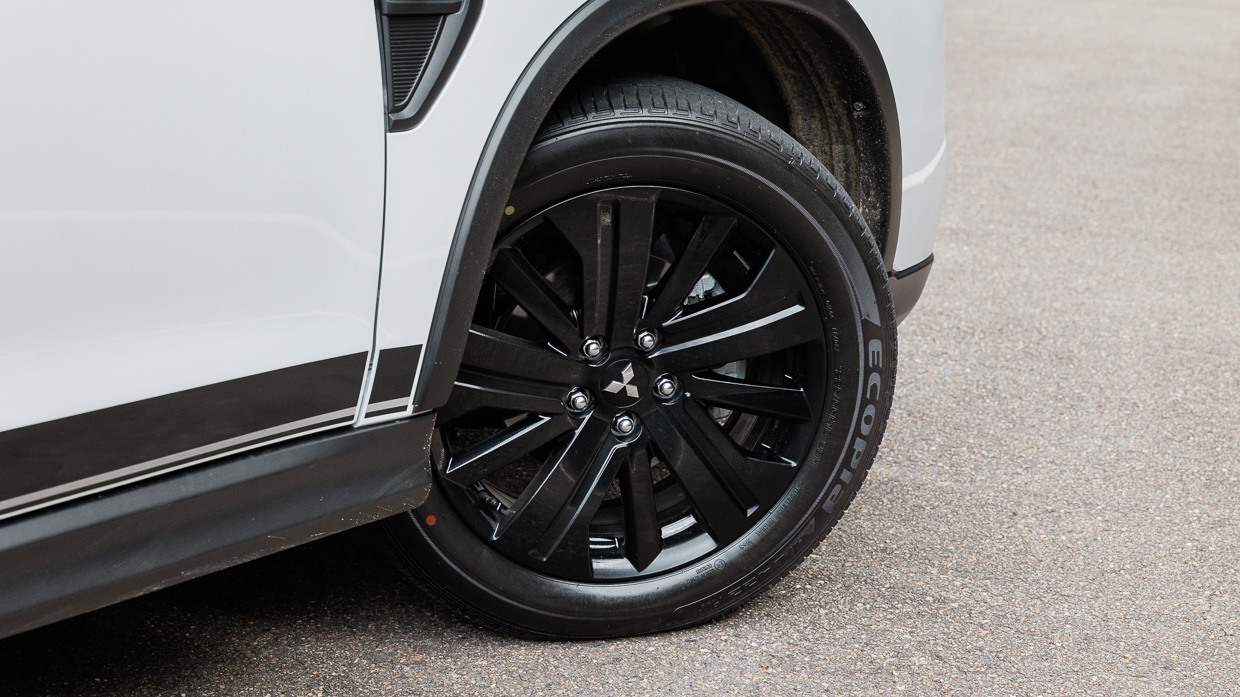
So, what’s going on here? The ASX remains popular with punters (with a remarkable eight percent market share of the high-selling small SUV segment) despite near-disdain from the road-testing community. Is this car the best example of the disconnect between motoring journalists and (a significant slice of) the Australian new car buying public? I think so!
Aussie motoring journalists tend to be metropolitan types (ourselves largely included) who can sometimes forget that known quantities like the ASX are a great source of security for thousands of new car buyers. Mitsubishi’s dealer network stretches wide across the continent, the ASX is mechanically simple and reliable – and there is safety in numbers.
The previous paragraph does not at all excuse Mitsubishi’s behaviour in almost completely resting on its laurels in (not) modernising aspects of the ASX – such as the refinement, interior or fuel economy – but it does explain why, despite repeated decidedly cold reviews, this car continues to be an obvious choice for many.
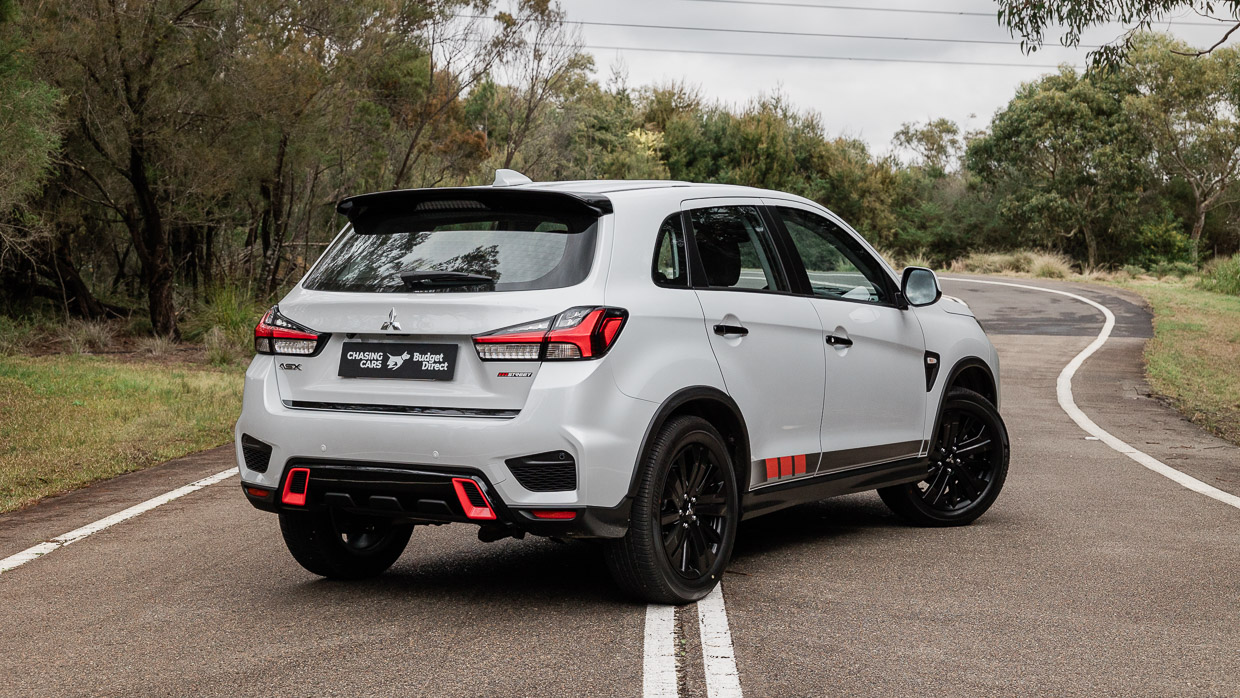
But is the ASX about to give up those advantages? Rumours are swirling that Mitsubishi is now finally planning to announce a confirmed replacement for the existing car, and it will probably be based on a Renault product. That doesn’t sound mechanically simple!
So, to recalibrate our opinions of the current ASX, as it exists in 2024, we borrowed a relatively basic ES model, optioned further with the limited-run Street Package. Here’s how our test went.
The ASX is available in six trim levels in Australia, starting from the GS (from $28,490 driveaway with an automatic) and topping out with the $39,180 driveaway Exceed grade.
This review focusses on the level-two ASX ES, currently on offer for $29,740 driveaway.
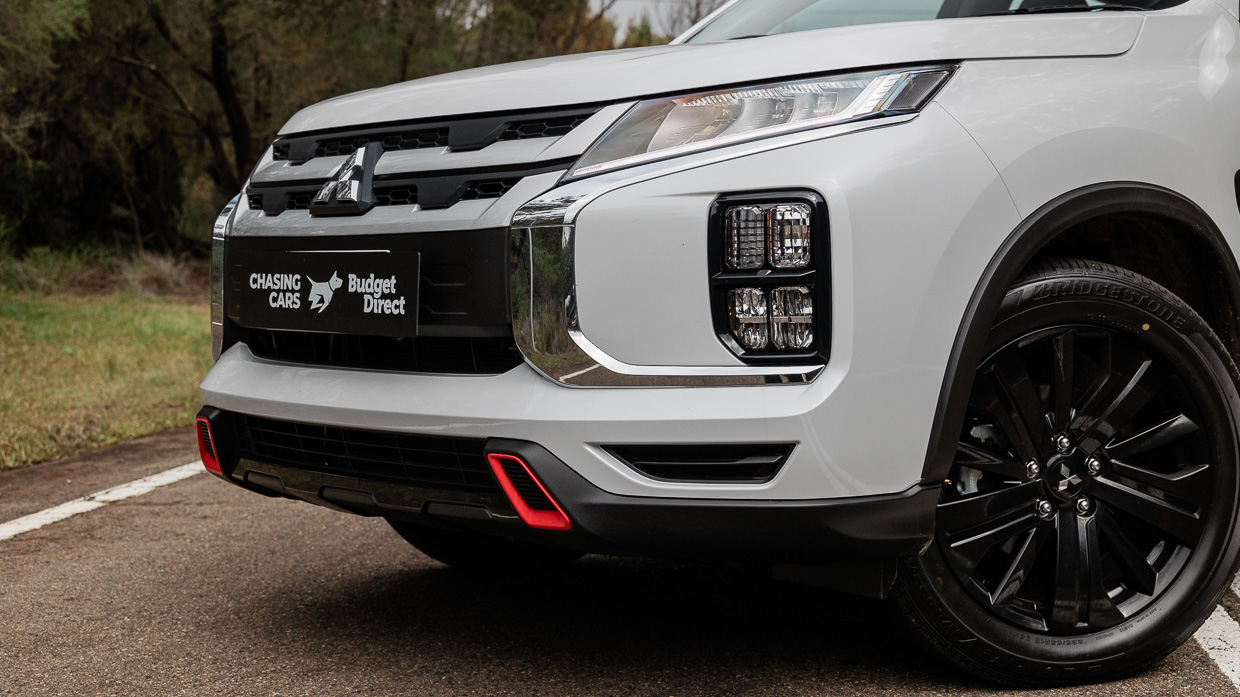
Here’s how the ASX’s driveaway price compares to its most popular rivals, all equipped with an automatic transmission. An asterisk indicates that buyers can currently nab a fixed driveaway price:
That price list reveals that, while the ASX is considerably cheaper than the Mazda, Hyundai and Toyota (the latter now being hybrid-only in Australia), the Mitsubishi ASX isn’t nearly the cheapest in segment: Chinese brands Haval and MG have solidified their offers as the most affordable small SUVs.
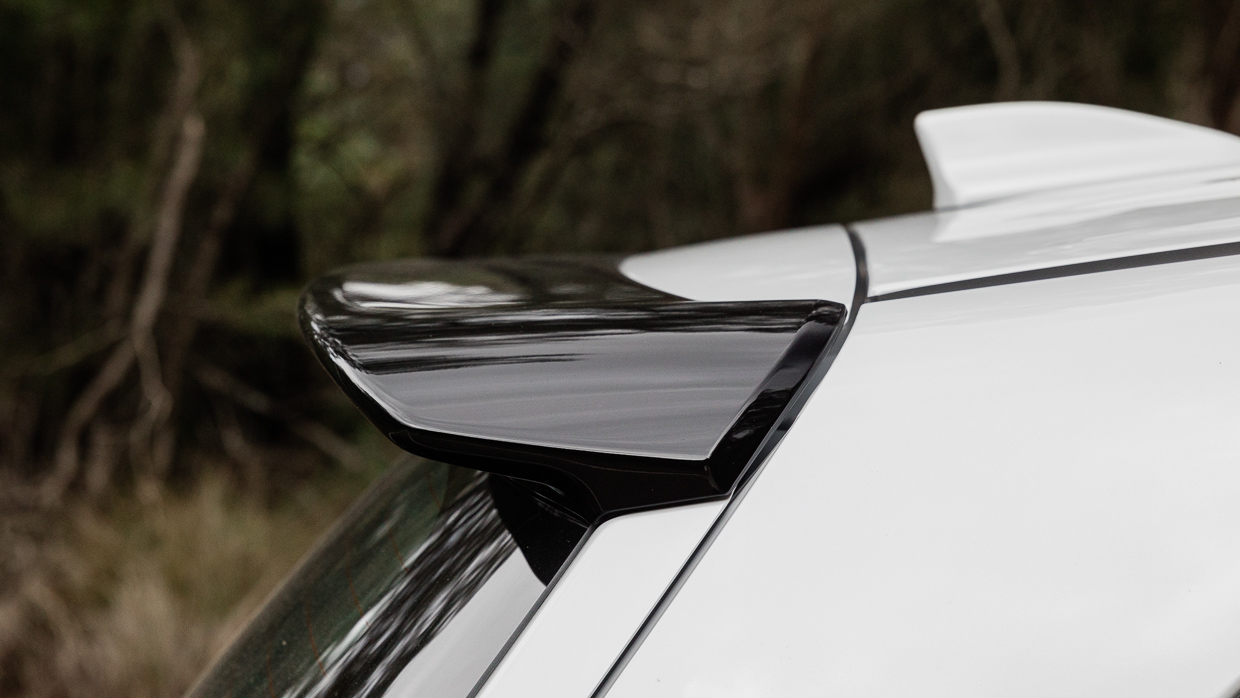
So what does the ASX ES pack in for its $29,740 driveaway price? The following features are fitted as standard:
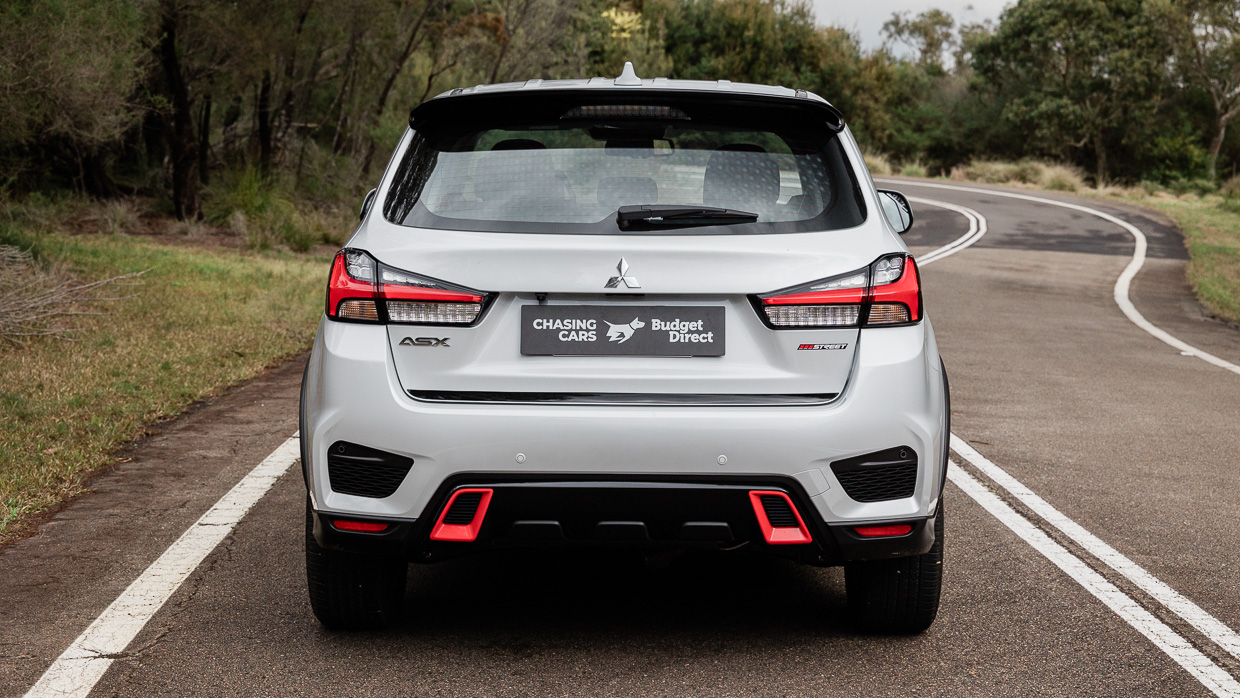
Our tester also had the limited-run Street package ($2500), which added:
In our view, it is a much better idea to forego the Street package and instead spend $1750 more than an ES on the ASX MR model, which is more generously equipped.
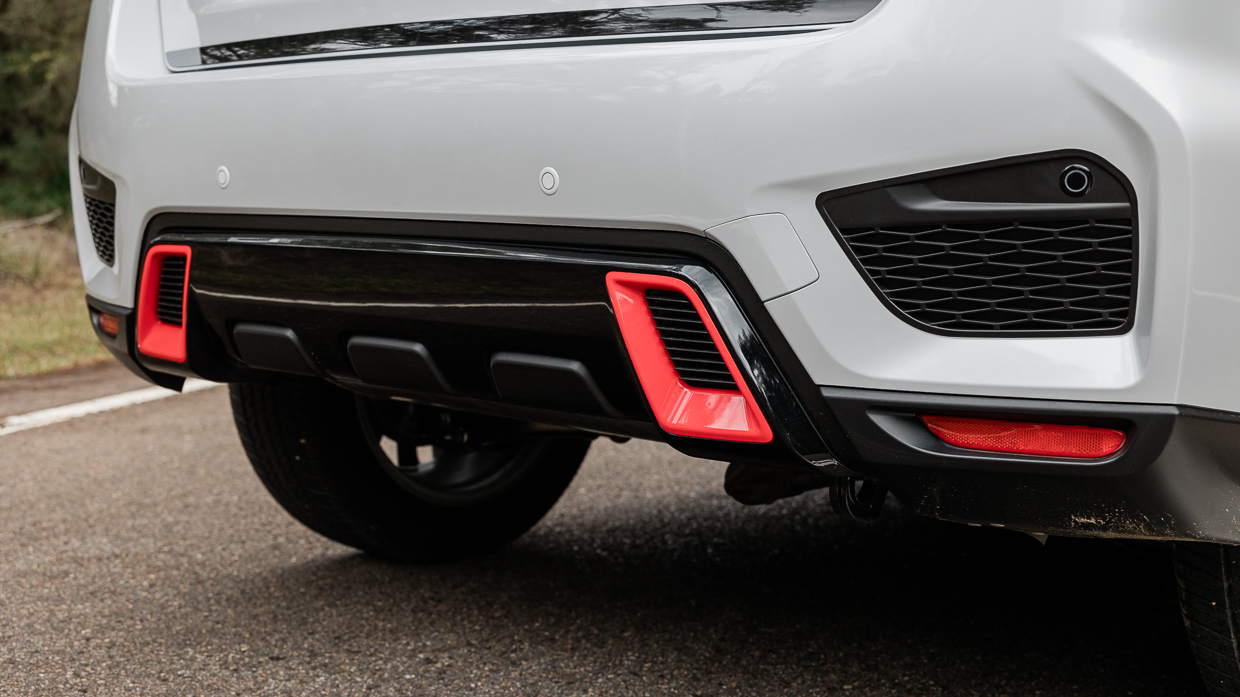
If you do opt for the ES Street Package trim, your colour choice is limited to three monochrome hues: White Diamond Premium Metallic, Sterling Silver Metallic, or Black Pearl.
Those colours are available on the standard ASX ES model, though the ‘non-Street’ version also opens up the choices of White solid (as a free colour), or optional Lightning Blue Pearl and Red Diamond Premium Metallic. The only interior colour is a dark fabric.
The simple answer is: not well. The slightly longer answer is that the ASX makes progress well enough and many people will think it is acceptable especially if they don’t sample a number of choices: a back-to-back test drive against virtually any other new small SUV would quickly reveal why the Mitsubishi ASX’s driving dynamics aren’t good enough.
Interestingly, the strongest element of the ASX’s dynamics is its engine. It might be ancient, but the 2.0-litre petrol still gets the job done pretty well. It makes decent power and torque (110kW and 197Nm), and while it does need a rev to get up to speed rapidly, it does rev quickly thanks to its fast-responding CVT automatic transmission.
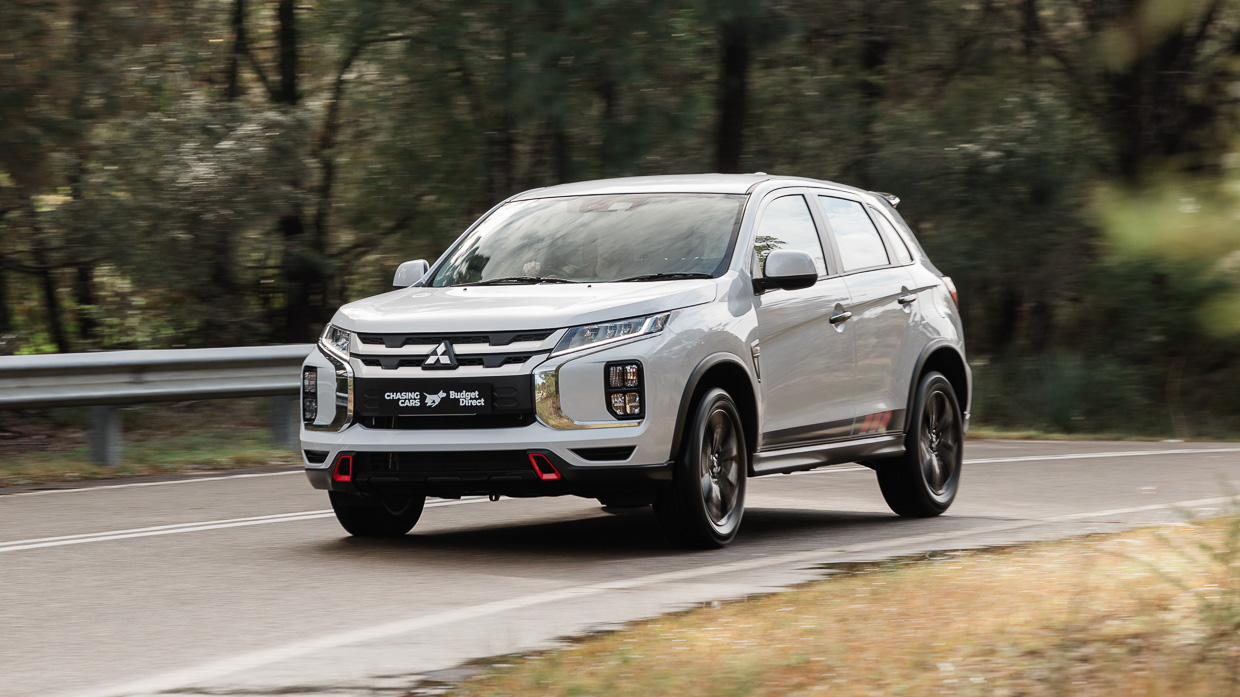
We didn’t have any issues building and maintaining speed while commuting, driving on the highway or on country roads. It’s a thirsty thing (see the ownership costs section) but the basic petrol four-cylinder in the ASX, and its CVT automatic, is fit for purpose, even if the aforementioned CVT feels artificially elastic. You get used to that quickly.
The big shortcomings are in areas that many people don’t care about, but should: loose and slow steering that kicks back in your hands over bumps, shocking ride quality with sharp suspension responses, and fatiguing, wallowing body control that is particularly alarming on bumpy, winding country roads when paired with lethargic stability control response times.
These issues make the ASX unpleasant to drive in any environment. From the first turn, drivers encounter unnecessarily heavy steering with a vast dead zone on centre – the car doesn’t turn as much as you expect. Then when the front end does finally start turning, the ASX heaves its weight onto the laden side, behaving nearly like a body-on-frame ute.
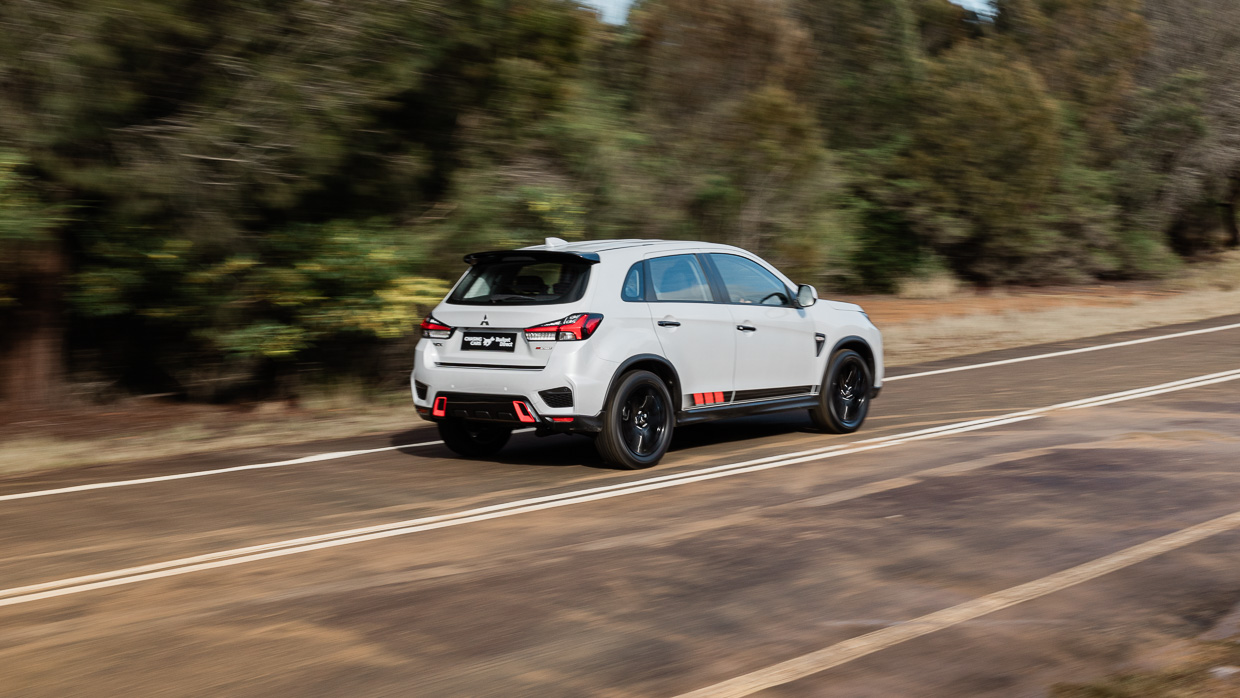
That’s before you strike the first bump, where the ASX’s firm suspension tune suggest that the engineers thought it was some kind of sports SUV – which would be fine if the body control held up. But it doesn’t: ultimately loose damping sees the ASX float around with subpar discipline as soon as the road gets technical. You have to really slow down.
Such major dynamic shortcomings were commonplace in the small SUV segment…10-20 years ago (i.e. the era the ASX comes from). Rivals have all made dramatic improvements in their steering responses, ride quality, body control, braking and stability control tuning, let alone refinement and fuel economy (which the ASX also struggles with).
On all of these metrics, the ASX is at the bottom of the class, perhaps accompanied by the also below-par MG ZS (from $21,990 driveaway). But plenty of other cheap small SUVs are considerably better to drive, from the Haval Jolion (from $25,990 driveaway) to the Suzuki Vitara (from $28,990 driveaway), both of which are also mechanically straightforward.
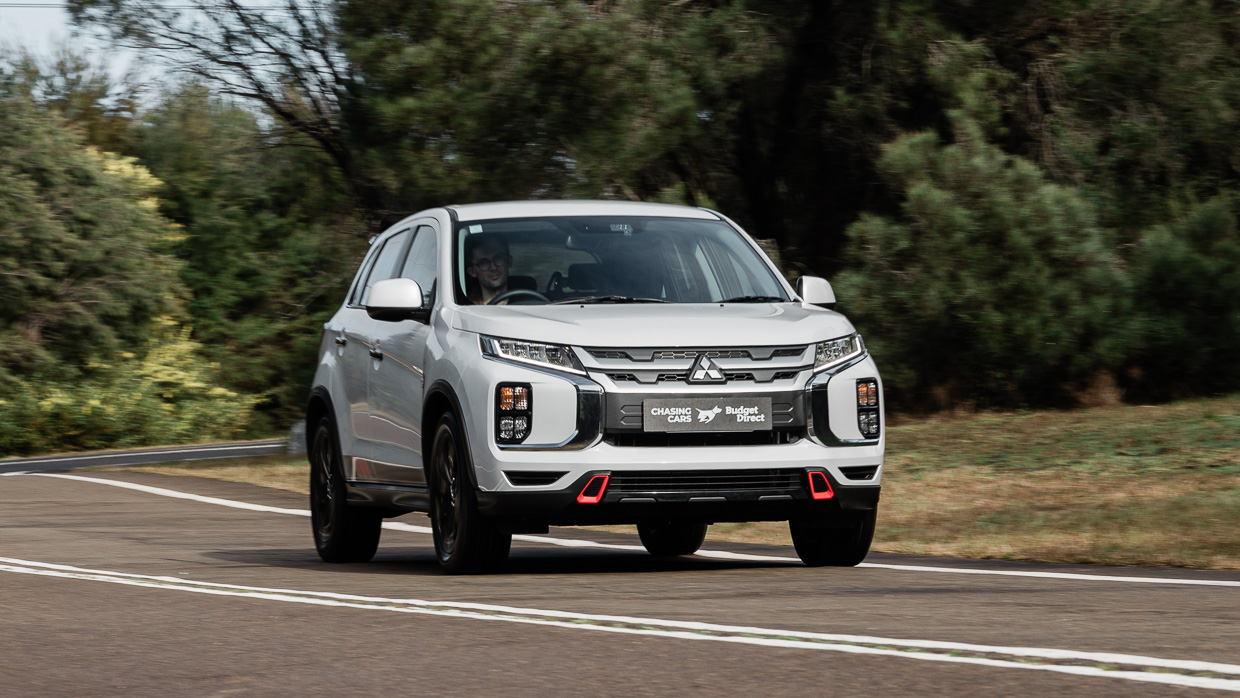
And the ASX is utterly blown away in terms of driving dynamics, value, refinement and economy by cars like the Skoda Kamiq (from $29,990 driveaway) with its seven-year warranty – but we aren’t naïve enough to suggest that, if you want mechanically simple and reliable, a turbocharged European crossover with dual-clutch automatic probably won’t suit!
Simply put, the ASX isn’t anywhere near good enough to drive and it hasn’t been for a long time. Mechanical simplicity is one thing – we aren’t against that – but that doesn’t require woeful steering, handling and ride. Those things can be accomplished with simplicity too.
The interior continues the same theme as the ASX’s driving dynamics. It’s dated and simple – which isn’t necessarily a problem (ask anybody: we appreciate buttons and dials), but being dated and simple doesn’t excuse basic shortcomings like uncomfortable seats, cheap build quality, refinement problems and poor specifications compared to rivals.
We don’t expect anything near a luxury car experience when you are spending ‘only’ $30,000 but the lack of support in the ASX’s flat chairs combined with acres of properly low-grade plastics signifies that the price should be more like $20,000. Again, the problem isn’t that the ASX is old: it is that it’s low-rent and not even that cheap.
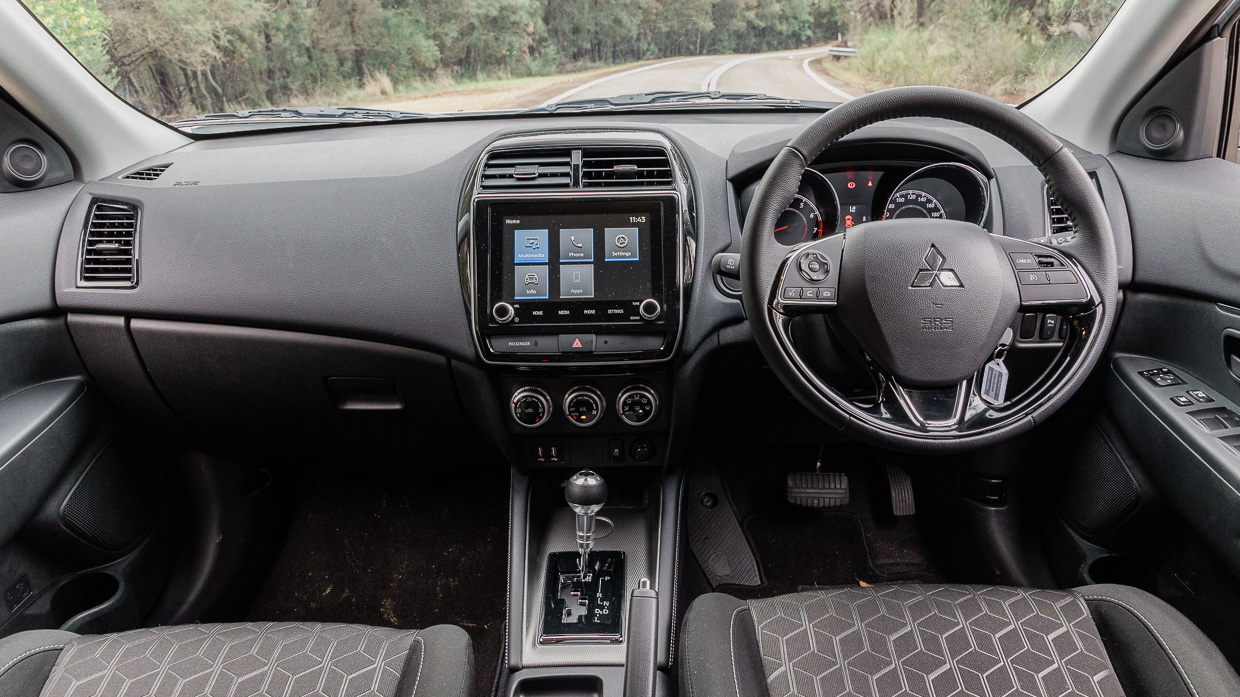
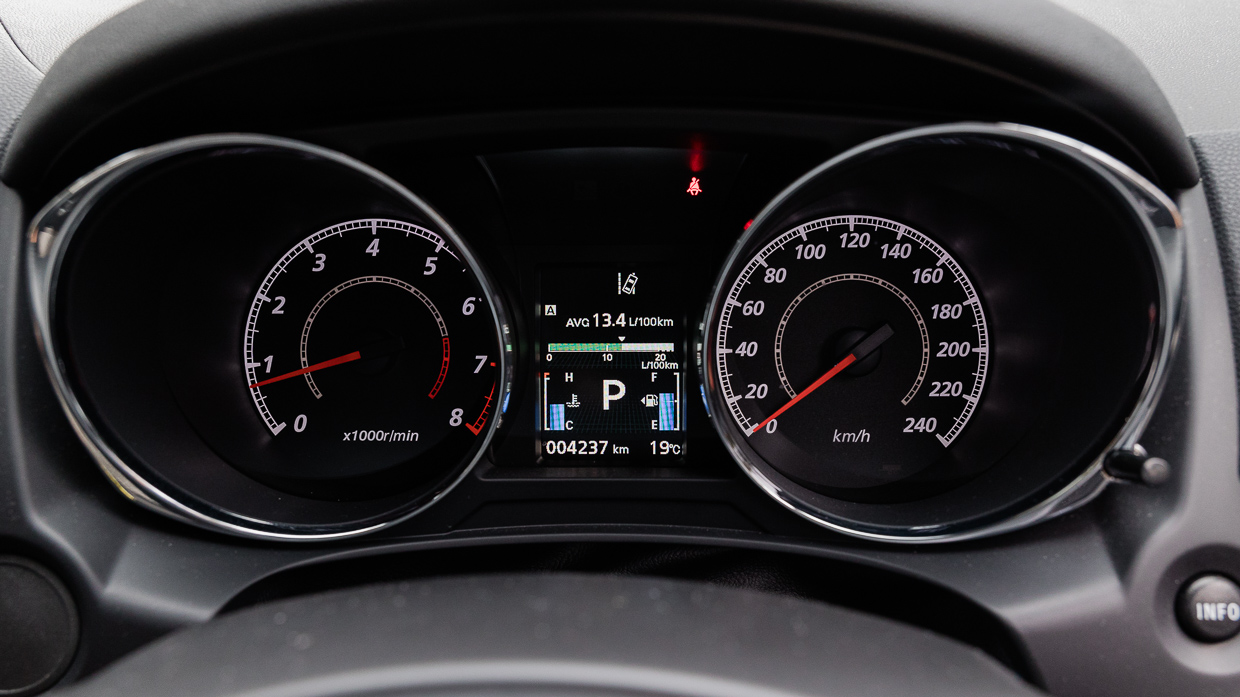
While Mitsubishi has seen fit to improve vehicles like the Outlander midsize SUV and Triton ute to acceptable levels in recent years, the ASX has languished. The brand – apparently starved of resources by owner Renault-Nissan – hasn’t found the time or money to lift the ASX to basic interior standards of the 2020s.
We don’t ping the ASX too much for missing the latest gizmos like USB-C ports, digital driver displays, connectivity or wireless smartphone mirroring (all of which it lacks) – but we have to take points off for lacking basics like a digital speedometer, especially when the print on the analogue dials is pretty small.
The interior layout is decent: the Street Pack’s leather steering wheel adjusts for reach and rake, there is a central armrest, the automatic transmission is mercifully conventional and there are clear knobs and dials for fan speed, temperature, and volume. A byproduct of not updating the interior is that Mitsubishi hasn’t had a chance to dispose of these helpful items.
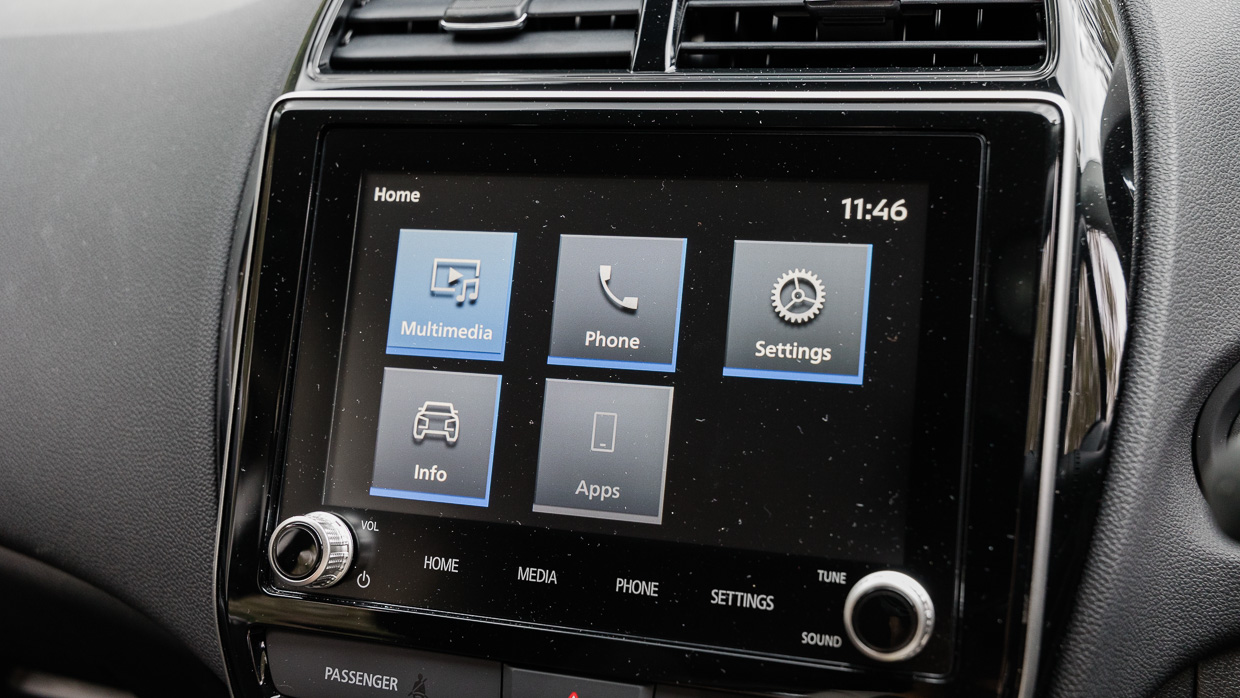
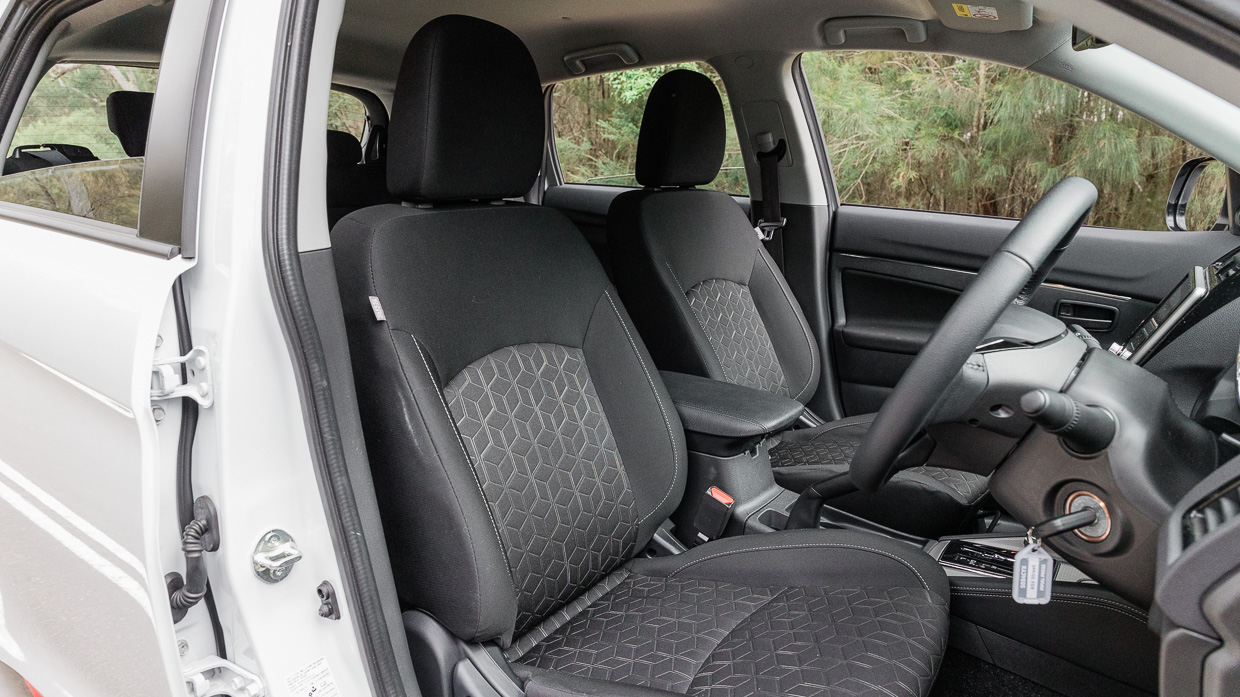
A simple central touchscreen accommodates wired Apple CarPlay (via USB-A port) while Mitsubishi’s own software is very simple to navigate – but it essentially only offers the radio, with no integrated sallite navigation fitted.
For our body shape, we found the ergonomics of the ASX contorted with the seat offering insufficient leg support, the steering wheel feeling too ‘tilted-up’ and the screen being a relative stretch when the seat was adjusted for good pedal fit. These comments are subjective – you should test drive the car to see if you can get comfy.
We were frustrated, too, that our few thousand-kilometre old tester also had a couple of easily noticeable rattles in the interior – in particular, a buzzing instrument binnacle that would noisily intrude over every bump. How has Mitsubishi not solved these quality issues over the incredibly long run of building the ASX? It’s baffling.
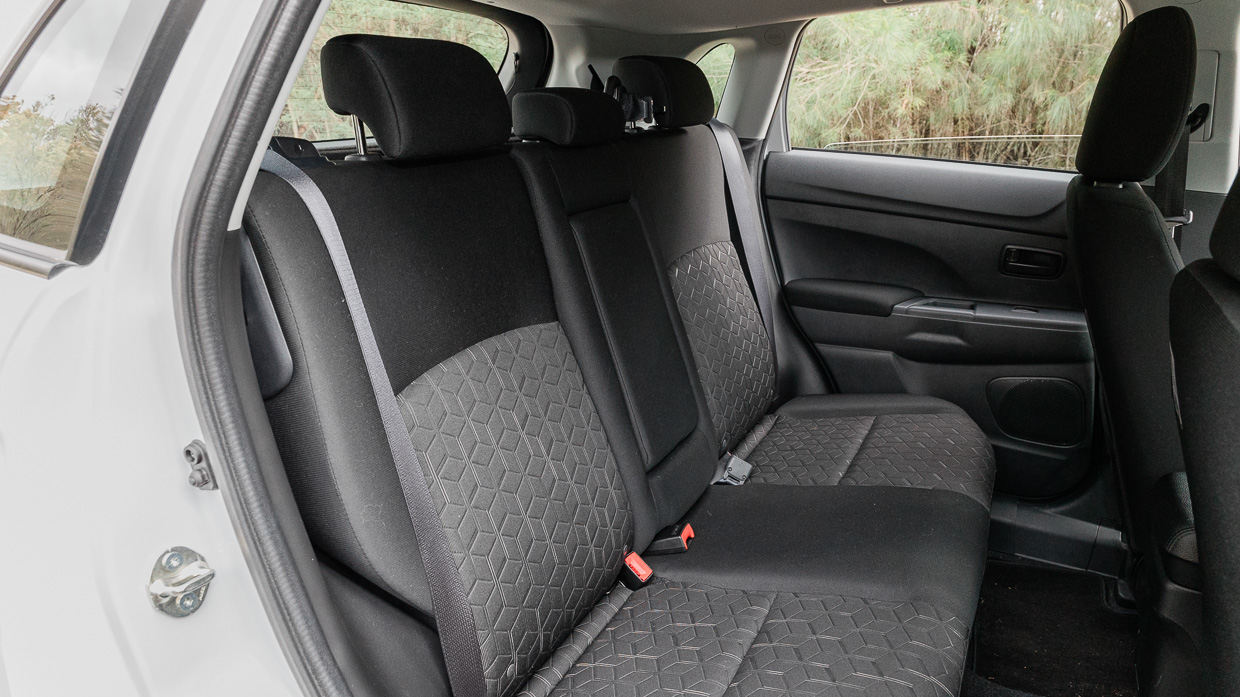
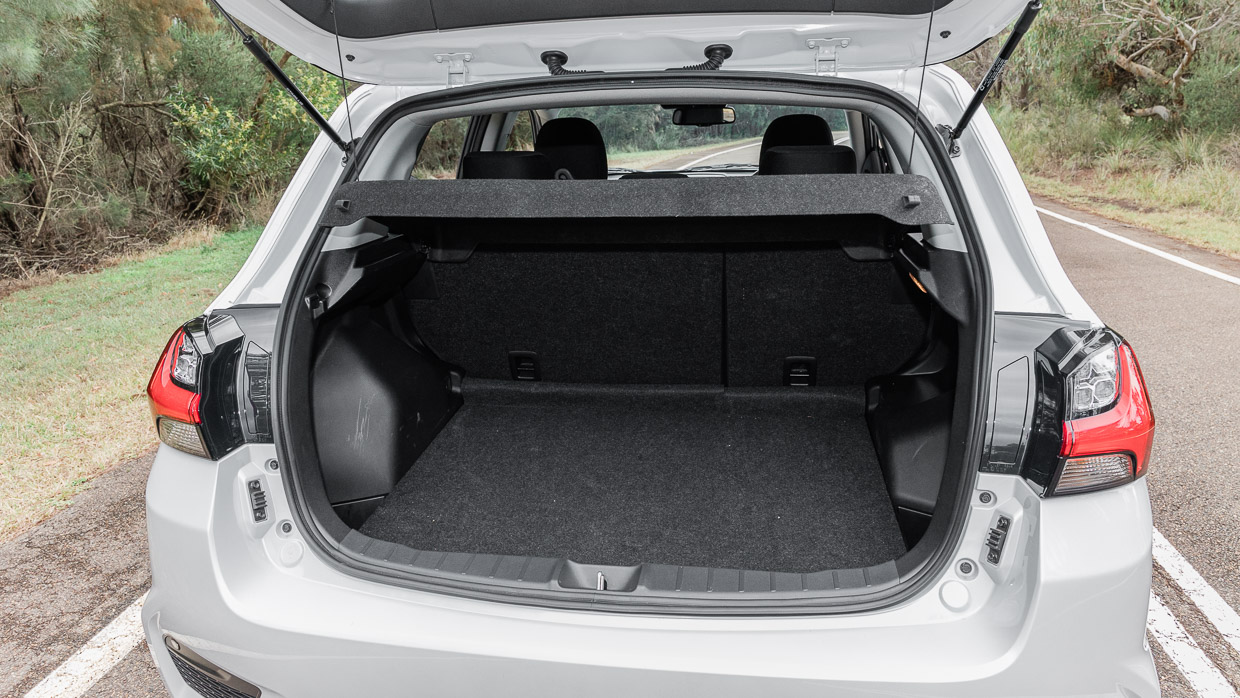
Moving to the back seats, the room on offer is pretty decent with six-foot adults able to fit behind their counterparts in the front seats. Amenities are threadbare: no air vents (so those in the front will need to turn up the fan), no centre armrest, and no rear USB ports on the ES variant (you do get them on the MR).
Behind the manual tailgate is a pretty useful 393 litres of boot space. It’s a generous, square cargo area: no special features to note, although the ASX commendably retains a space saver spare wheel and tyre.
It’s hard to say with certainty: officially, the ASX is now unrated by Australia’s new car crash and safety testing body, ANCAP. Mitsubishi allowed the ASX’s rating to expire in January 2023 and a re-test has not occurred subsequently.
ANCAP’s five-star standard gets stricter every few years so it isn’t easy to compare the Mitsubishi’s prior performance with rivals rated recently. That said, Mitsubishi has added some safety features to the ASX over the years, which is positive.
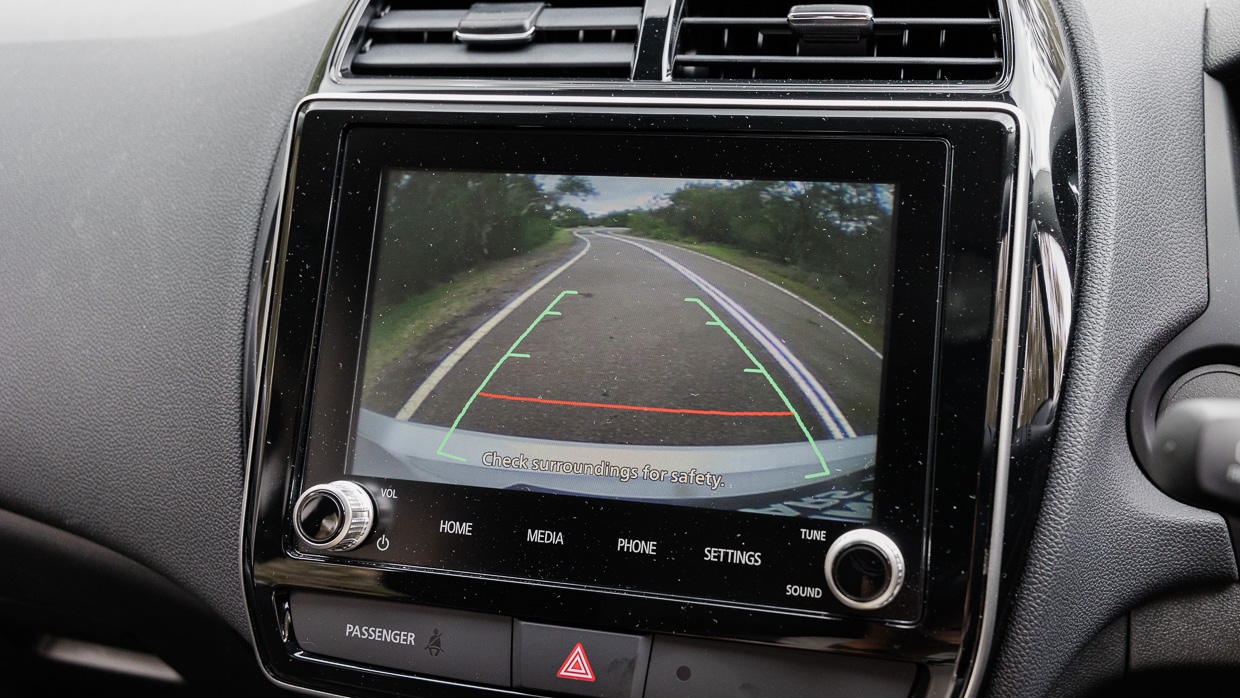
Basic safety features fitted to all ASX models (from the GS upward) include forward collision warning, autonomous emergency braking, and a basic reversing camera. The ES adds audible reversing sensors.
Our testing really only allowed us to judge the reversing assistants. The camera display is large but really poor quality – usable, but not impressive – while the parking sensors worked as expected.
Buyers have to step up to the mid-spec LS (currently $32,490 driveaway) to start adding the sorts of safety features now expected in this class, such as blind spot monitoring, rear cross-traffic alert and lane departure warning.
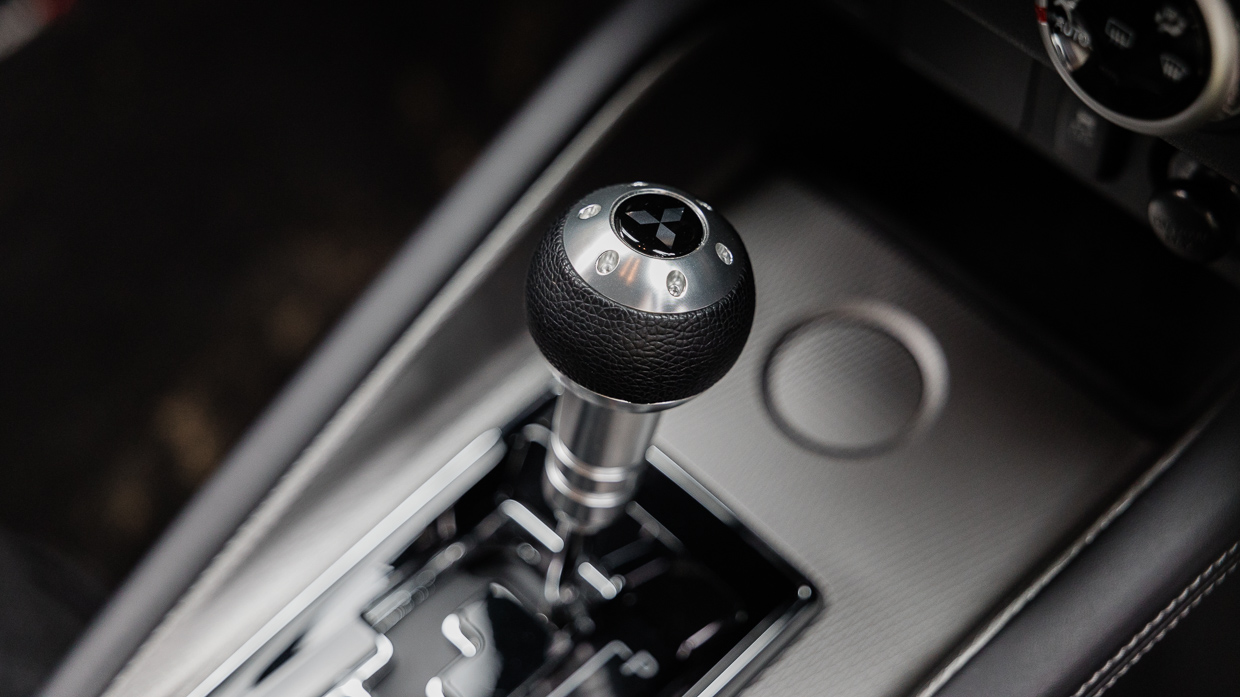
On no ASX can you have features like autonomous braking that detects oncoming cars, reversing AEB, a 360-degree parking camera, and so on. Many buyers won’t care – but if you are considering this car as a first vehicle for your teen, you might.
In the scheme of things, the Mitsubishi ASX isn’t that expensive to keep on the road – but hybrid-powered rivals can be considerably cheaper in the long run, albeit often pricier to purchase up front.
Many would be pleased that Mitsubishi has doggedly maintained simple mechanicals for the ASX. The tried and tested 2.0-litre non-turbo petrol engine and CVT are known for their high-mileage durability and few reliability issues are reported for the ASX. That’s very impressive.
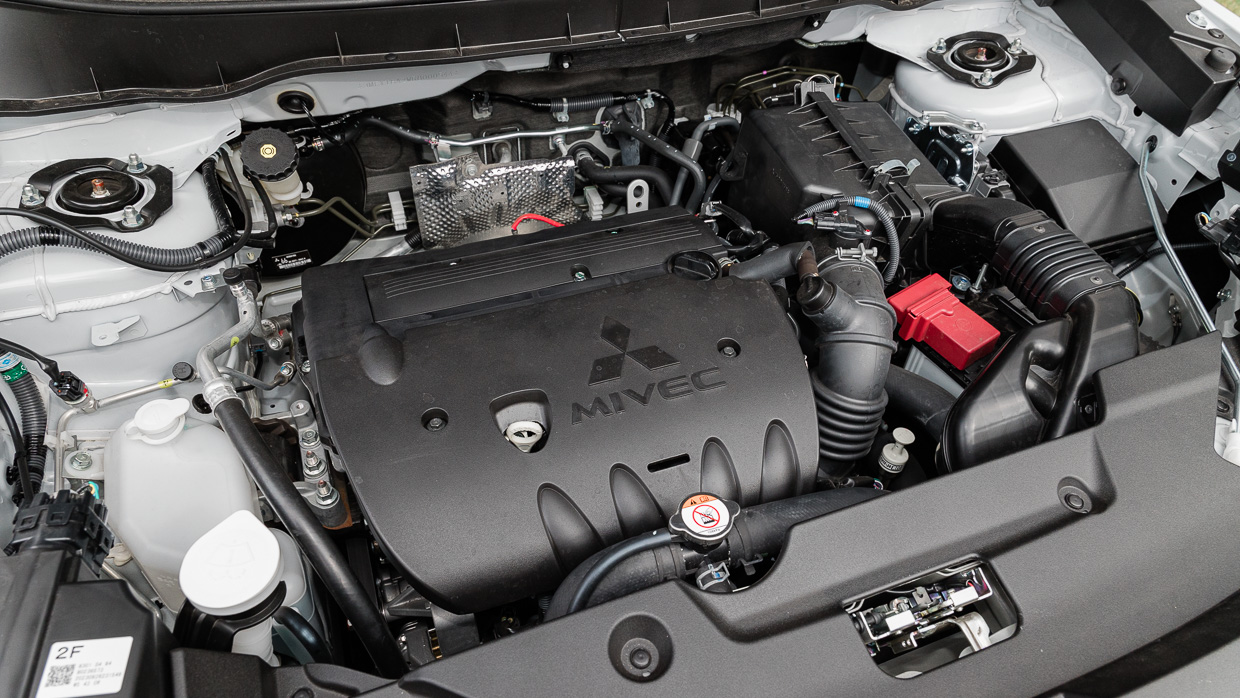
A downside of not modernising the engine is that it uses more fuel than most. On the highway, you can expect 7.0-7.5L/100km at a steady 110km/h, but our urban test netted a thirsty 10.0L/100km. On the cheapest and dirtiest 91-octane petrol, the large 63-litre fuel tank still means a worst-case range of 630km (urban).
That makes it quite interesting to compare the ASX to a relatively affordable rival like the Haval Jolion Lux Hybrid. The Haval is twice as economical (5.0L/100km in the city) and better to drive, but it’s more expensive (at $35,990 driveaway, it’s around $5000 dearer than the ASX). In just over three years, though, the Jolion pays for itself in fuel savings.
But the Haval doesn’t carry Mitsubishi’s reputation for bomb-proof mechanicals. And largely as a result of its simplicity (and the sheer number of ASXs on the road), servicing the ASX at Mitsubishi dealer is reasonably affordable – and if you want the advertised 10-year warranty, you will have to service it with Mitsubishi.
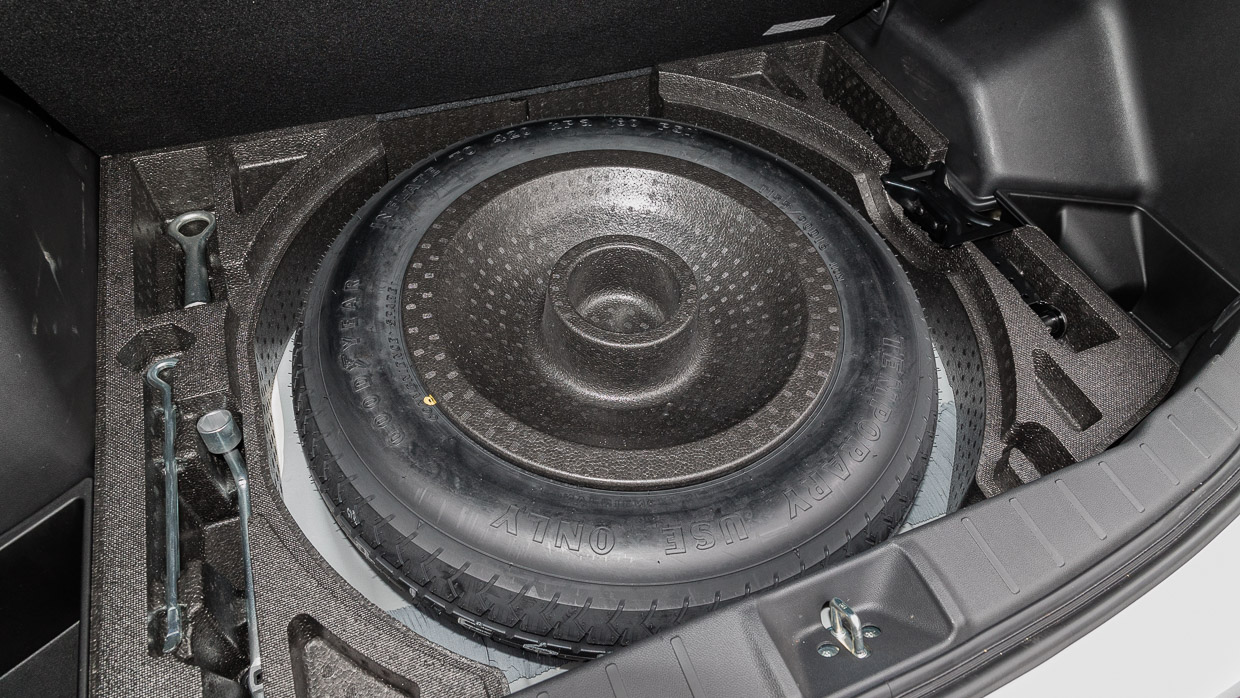
Scheduled maintenance intervals are the first of every 12 months or 15,000 kilometres, and the first five years or 75,000km of servicing costs $1945 (averaging out to $389 per year). That’s not too bad for the segment, although the Toyota Corolla Cross hybrid costs just $1250 ($250 per year) to maintain over the same window.
The warranty caveat? Mitsubishi Australia splashes a 10-year warranty across much of its local advertising, but the default is a sub-par five-year/100,000km warranty (compared to five years/unlimited km as the industry standard). Service it exclusively with Mitsubishi centres – on time – and you can extend it to 10 years/200,000km.
Still, MG, with its cheaper ZS rival, now offers a 10-year/250,000km warranty without the condition of MG-specific servicing.
It’s not possible for us to recommend the Mitsubishi ASX. On the one hand, it is a dated but mechanically simple and reliable vehicle – and those things aren’t necessarily problematic.
On the other hand, it is a vehicle that lags inexcusably behind rivals on driving dynamics, interior comfort and fit and finish.
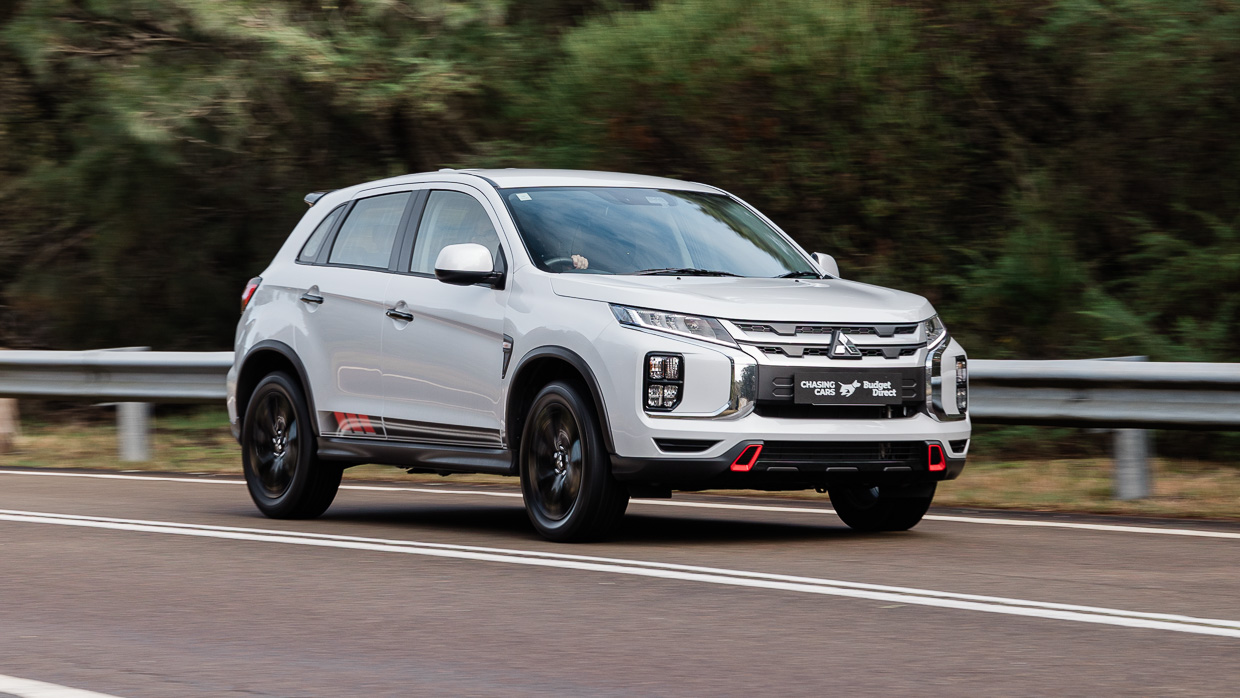
The ASX gets by on its (earned) reputation for durability, Mitsubishi’s (solid) dealer and service network, the conditional, and the fact this unfussy vehicle has no learning curve – it ultimately does do the basics. But in 2024, when you’re shelling out $30,000, Australians deserve more than the bare minimum in handling, ride quality, efficiency…
Clearly, many buyers disagree with our assessment. We are comfortable with that. Honest road testing often requires accepting that there can be distance between our opinion and the choices made by some. All we can do is advise that you test drive a number of the plentiful options from the small SUV segment before signing on the dotted line for any car.
Key specs (as tested)
About Chasing cars
Chasing Cars reviews are 100% independent.
Because we are powered by Budget Direct Insurance, we don’t receive advertising or sales revenue from car manufacturers.
We’re truly independent – giving you Australia’s best car reviews.
The estimate provided does not take into account your personal circumstances but is intended to give a general indication of the cost of insurance, in order to obtain a complete quote, please visit www.budgetdirect.com.au. Estimate includes 15%^ online discount.
^Conditions Apply
Budget Direct Insurance arranged by Auto & General Services Pty Ltd ACN 003 617 909(AGS) AFSL 241 411, for and on behalf of the insurer, Auto & General Insurance Company Limited(ABN 42 111 586 353, AFSL 285 571).Because we don’t know your financial needs, we can’t advise you if this insurance will suit you. You should consider your needs and the Product Disclosure Statement before making a decision to buy insurance. Terms and conditions apply.
Indicative quote based on assumptions including postcode , 40 year old male with no offences, licence suspensions or claims in the last 5 years, a NCD Rating 1 and no younger drivers listed. White car, driven up to 10,000kms a year, unfinanced, with no modifications, factory options and/or non-standard accessories, private use only and garaged at night.
^Online Discounts Terms & Conditions
1. Discounts apply to the premium paid for a new Budget Direct Gold Comprehensive Car Insurance, Third Party Property Only or Third Party Property, Fire & Theft Insurance policy initiated online on or after 29 March 2017. Discounts do not apply to optional Roadside Assistance.
2. Discounts do not apply to any renewal offer of insurance.
3. Discounts only apply to the insurance portion of the premium. Discounts are applied before government charges, taxes, levies and fees, including instalment processing fees (as applicable). The full extent of discounts may therefore be impacted.
4. We reserve the right to change the offer without notice.